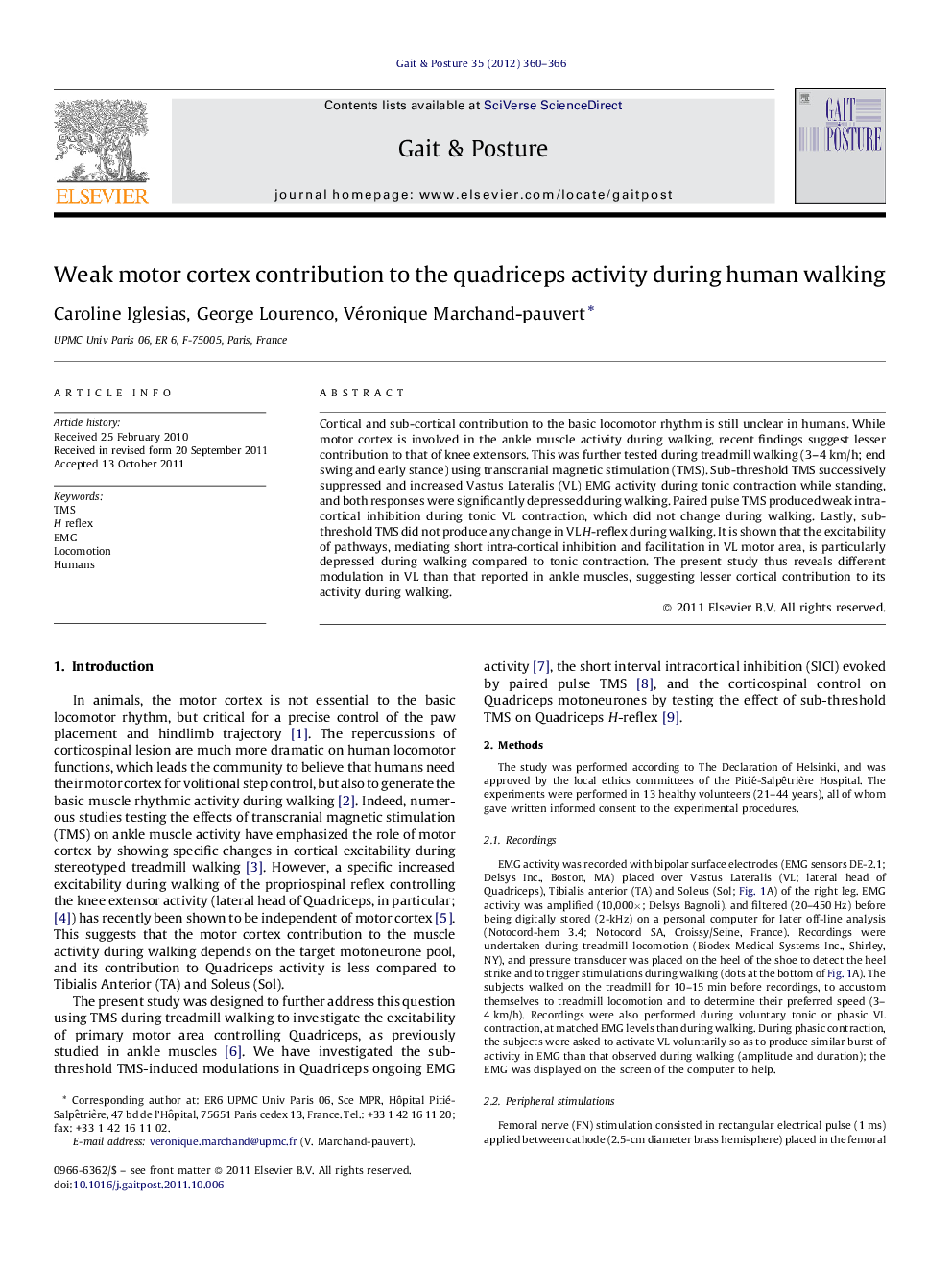| Article ID | Journal | Published Year | Pages | File Type |
|---|---|---|---|---|
| 6207983 | Gait & Posture | 2012 | 7 Pages |
Cortical and sub-cortical contribution to the basic locomotor rhythm is still unclear in humans. While motor cortex is involved in the ankle muscle activity during walking, recent findings suggest lesser contribution to that of knee extensors. This was further tested during treadmill walking (3-4Â km/h; end swing and early stance) using transcranial magnetic stimulation (TMS). Sub-threshold TMS successively suppressed and increased Vastus Lateralis (VL) EMG activity during tonic contraction while standing, and both responses were significantly depressed during walking. Paired pulse TMS produced weak intra-cortical inhibition during tonic VL contraction, which did not change during walking. Lastly, sub-threshold TMS did not produce any change in VL H-reflex during walking. It is shown that the excitability of pathways, mediating short intra-cortical inhibition and facilitation in VL motor area, is particularly depressed during walking compared to tonic contraction. The present study thus reveals different modulation in VL than that reported in ankle muscles, suggesting lesser cortical contribution to its activity during walking.
⺠The cortical control of knee extensor was investigated during human walking. ⺠TMS activates cortical networks modulating EMG during voluntary knee extension. ⺠The TMS-induced modulations of EMG activity are less during walking. ⺠The cortical contribution to knee extensor activity during walking is weak. ⺠Its contribution to muscle walking activity is different at ankle and knee levels.
